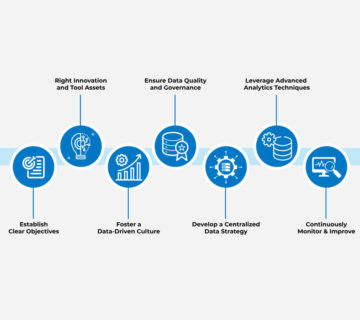What Is Kari’s Law, And How Can Your Business Comply?
Calling 911 from a large facility such as an office building, university, campus, or hotel can be a considerable challenge. These facilities usually have multi-line telephone systems (MLTS) that require callers to key in a number or code to secure an outside line. Additionally, callers have to provide accurate information about their location in the building or complex. Business Comply
To address those challenges, the Federal Communications Commission (FCC) is implementing two statutes: Ray Baum’s Act and Kari’s Law. These statutes make it easier for callers to connect to 911 and for emergency service providers to locate those callers.
Need a 3CX phone system in Orange County? Call Technijian.
What is Kari’s Law?
What Is Kari’s Law, And How Can Your Business Comply?
Kari’s statute is crafted to ensure that anyone is able to reach a 911 call center by dialing 911 from an MLTS. The law is named in memory of Kari Hunt, a lady who was murdered by her estranged husband in 2013 in a motel room. Her daughter attempted to call 911 four times, but her calls could not go through since the motel’s phone system required callers to dial “9” before any call to secure outbound phone lines.
The statute went into effect on February 16, 2020, and requires MLTS vendors and manufacturers to configure new phone systems to enable direct dialing of 911. The system must simultaneously send a notification to a central location, either onsite or offsite, such as a security kiosk or front desk. Typically, the notification provides an alert that a caller has dialed 911 and includes a callback number and details about the caller’s location.
Overall, Kari’s Law requires that:
- Users are able to dial 9-1-1 without using any prefix to reach an outbound line (for example, pressing 9 to dial out).
- Under the Law, dialing “9 + 9-1-1” may still be functional but not a requirement.
- MLTS must send a notification to designated onsite or offsite personnel, such as a security kiosk or front desk, that a 9-1-1 emergency call has been placed.
- The notification must include at least the instance of a 9-1-1 call being dialed, a valid callback number, and details about the caller’s specific location within the facility.
Although Kari’s Law is not explicit about the notification method, it allows for installers, operators, and managers of MLTS to use a “cost-effective and efficient notification solution.” Some examples of effective notification solutions include visual alerts on monitors, audible alarms, phone calls, text or email messages, and network-based applications.
Penalties for Non-Compliance with Kari’s Law
The Federal Communications Commission (FCC) currently included Kari’s Law in the revised Communications Act. Business Comply this move means that the FCC can enforce punitive penalties on institutions that are noncompliant with the statute. Businesses that don’t comply with Kari’s Law can face fines of up to $10,000. Organizations can also incur extra penalties, such as a fine of up to $500 per day for each day you remain noncompliant.
Moreover, businesses and organizations not compliant with Kari’s Law may find themselves facing civil lawsuits and potential criminal charges if a tragedy occurs on their premises and the phone system used to call 911 does not meet the requirements of the statute.
What is RAY BAUM’S Act?
Similar to Kari’s Law, RAY BAUM’S Act emphasizes the importance of availing to PSAPS dispatchable location information from all calls made to 911 regardless of the technological platform used. According to the FCC, “dispatchable location refers to a location delivered to the PSAP (public safety answering point) with a 911 call. It consists of the validated street address of the caller, plus extra information such as apartment, suite, or similar information.”
The RAY BAUM’S act requires that:
- Telephone systems provide critical information related to callers dialing 9-1-1, such as “dispatchable location” to a PSAP, like a 9-1-1 call center.
- The “dispatchable location” is “the street address of the caller, and additional information such as floor number, room number, or similar information needed to identify the caller’s location adequately.”
The initial compliance date with Ray Baum’s Act was January 6, 2020, for non-fixed MTLS calls and January 6, 2021, for fixed MLTS calls.
Tools for the 911 Community
In collaboration with FCC, the National 911 Program has developed a myriad of dynamic, user-friendly tools for PSAP and emergency communications center (ECC) administrators, vendors, manufacturers, and service providers. These tools are also helpful for any entity interested in understanding MLTS and dispatchable location requirements, as well as the consequences of non-compliance for MLTS users and manufacturers.
The tools provide:
- An overview of legislation
- Comprehensive lists of state laws and FCC rules and terms
- An interactive checklist to help track progress toward compliance
- Compliance rules and deadlines
How to Ensure Compliance with Ray Baum’s Act and Kari’s Law
Your organization should take the following steps to ensure it complies with this legislation:
- Assess your current MLTS: Start by determining whether your phone system channels emergency 9-1-1 calls to response centers without requiring any prefix. You also need to verify that the system is correctly conveying notifications and caller location information.
- Install compliant software and hardware: The legislation requires all telephone devices manufactured, sold, or imported in the US after February 2020 to be compliant. If your existing equipment isn’t compliant and you don’t plan to invest in new hardware, consider purchasing software solutions that can bring your system to compliance.
- Configure your call system for E911 technology: MLTS must convey specific individual caller information. So even if you have installed E911 features, you may need to reconfigure them to be compliant.
- Plan for the remote workforce: The legislation applies to all US-based users who can dial emergency services, including people using nomadic softphone applications on mobile devices or desktops. If your business operates in other countries but has US-based users, it must remain compliant with the legislation.
Connect with an Expert!
To determine whether your organization is compliant with Kari’s Law, you need to work with an IT expert with immense experience in this field. Technijian can configure your system and help implement the right solutions to achieve compliance with the Kari Law. We provide customized IT services and IT support to businesses in LA and Orange County in California. Contact us today to begin the conversation with one of our IT specialists!



No comment